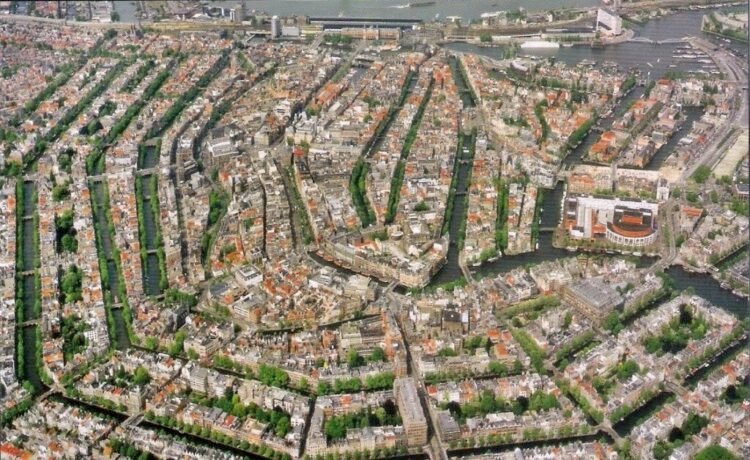It’s common to hear it said that some particular city — usually one of the American metropolises that sprang into existence over the past couple of centuries — “shouldn’t exist.” And indeed, as urban planner M. Nolan Gray writes in a recent blog post, “no city should exist.” On the scale of human history, we’ve only just started building the things, and we don’t do so on pure instinct. “There isn’t supposed to be a city anywhere. They exist because we will them into existence.” And we often do so in unlikely contexts: “Half of Boston was dredged up from the ocean. St. Louis only exists because we tamed the greatest river on our continent. Supplying Philadelphia with drinking water is an engineering feat on the scale of the Los Angeles Aqueduct.”
Outside the United States, we see the same conditions surrounding “the greatest cities ever built: Tokyo and St. Petersburg required engineering feats on the scale of anything seen in the US. Amsterdam and Mexico City were literally built on top of water.” How that was managed in the particular case of the Dutch capital is explained in the new video from The Present Past at the top of the post, as well as in the OBF video below.
Amsterdam’s most striking feature, its canals, were created not to look picturesque; in fact, as The Present Past host Jochem Boodt puts it, their construction was “a matter of life and death.” Too soft for farming or home-building, the swampy ground beneath the city on the river Amstel had to be drained; when drained, it became subject to floods, which necessitated building dikes and a dam.
httv://www.youtube.com/watch?v=Mo3llzKdAD0
That thirteenth-century engineering project of damming the Amstel protected the city, and also gave it its name. The Amstel itself is, in fact, a huge canal, and the rapid expansion of the settlement around it necessitated digging more and more auxiliary canals to assist with drainage, which defined the space for islands on which to build new districts (Venice-style, atop hundreds of thousands of poles driven into the sea floor). As shown in the OBF video, this distinctive urban structure dictated the shapes of the city’s houses, with their universally narrow façades and their depths reflecting the wealth of the families within. Now, four centuries after it took its current shape — and having survived numerous crises inherent to its unusual situation and form — the center of Amsterdam is looked to as a paragon of urban planning, sometimes imitated, but without similarly “impossible” original conditions, never replicated.
Related content:
The Brilliant Engineering That Made Venice: How a City Was Built on Water
Travel from Rotterdam to Amsterdam in 10 Minutes by Boat: A 4K Timelapse
Why Europe Has So Few Skyscrapers
Based in Seoul, Colin Marshall writes and broadcasts on cities, language, and culture. His projects include the Substack newsletter Books on Cities and the book The Stateless City: a Walk through 21st-Century Los Angeles. Follow him on the social network formerly known as Twitter at @colinmarshall.















